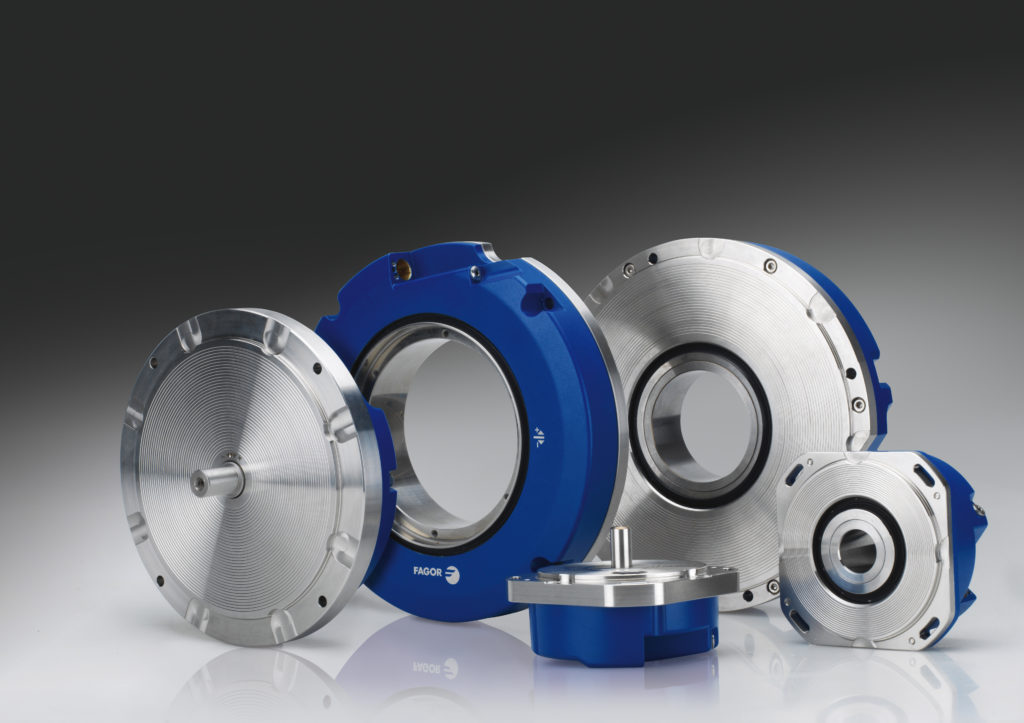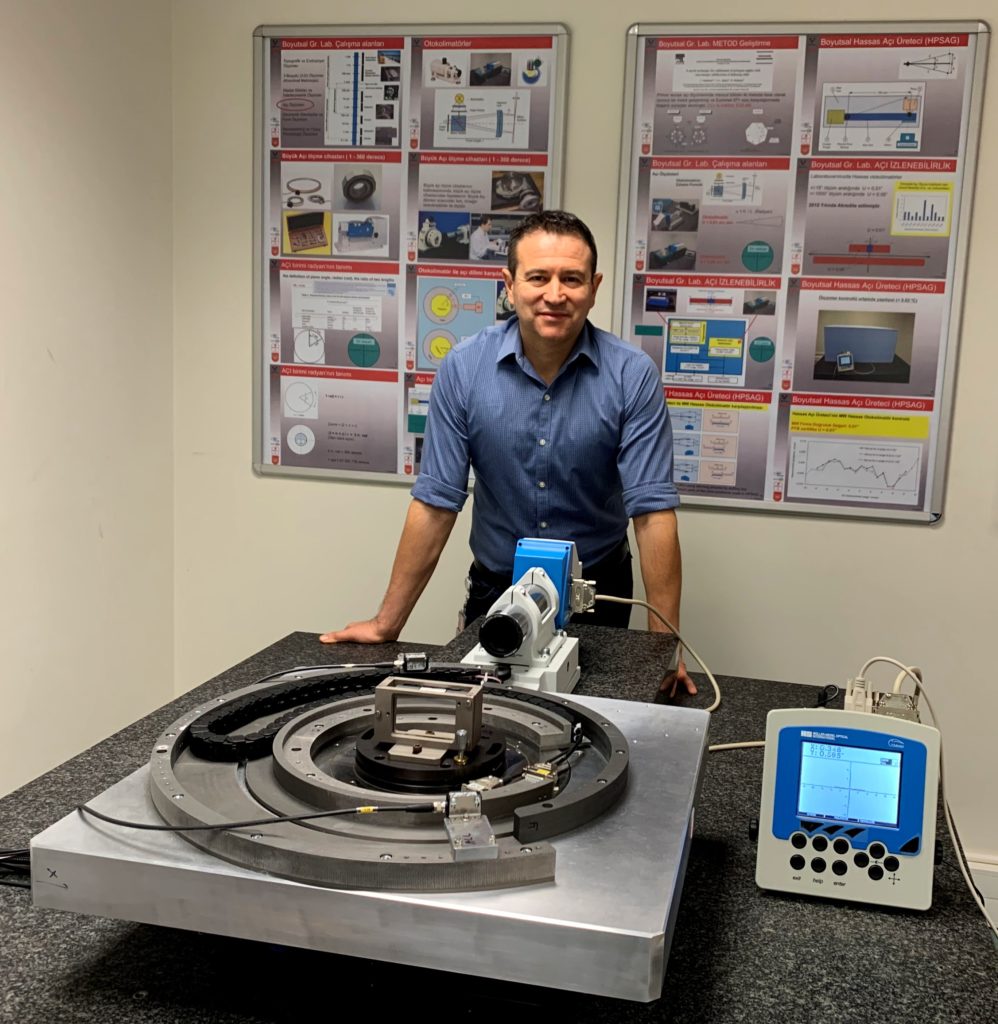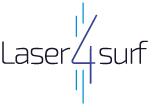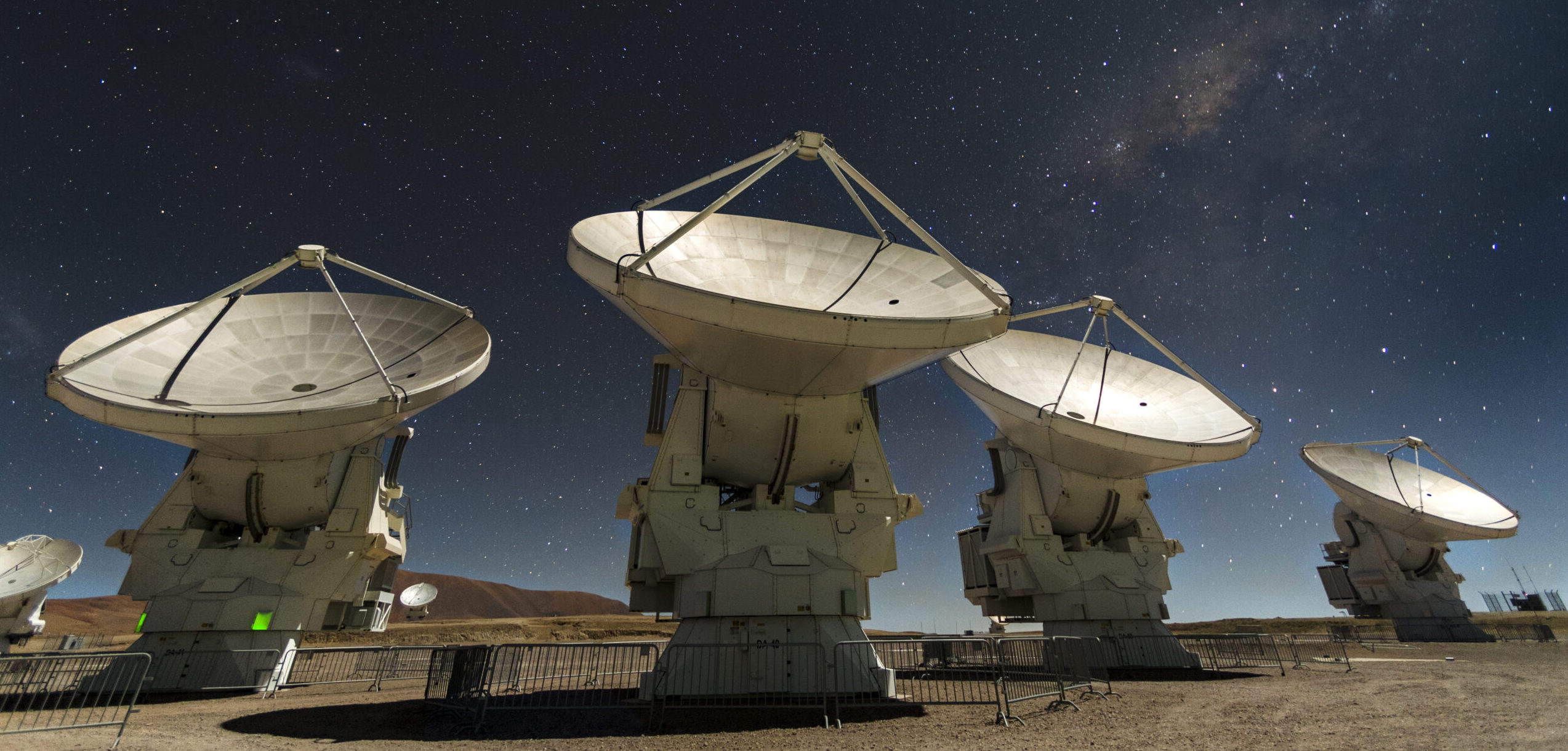From aerospace and astronomy to medical imaging and semiconductor manufacture, a vast range of applications rely on a little-known device.
Meet the optical encoder.
Whether it is a distance or rotational angle, the humble optical encoder lets you know where things are. Used in a mind-boggling array of applications, from automotive assembly to semiconductor manufacturing, the device provides position information of an axis to a massive range of tool and automation systems. Yet despite its critical function in industries far and wide, the optical encoder remains very much, a hidden gem.
As Tomás Morlanes, optical technology manager at Spain-based Fagor Automation puts it: “Optical encoders are important for the technological development of our society as it is impossible to develop any technology without making a quantification: Every single axis in any machine uses either a linear or an angle encoder, and both types of encoders are going to profit from the results of the Laser4Surf project that we are participating in.”
Key industries that rely on optical encoders include aerospace, displays, electronics, manufacturing, medical, metrology and renewable energy. For example, the aerospace industry uses encoders to provide position feedback in antenna positioning systems, airborne guidance systems, X-Y positioning in automated assembly systems and even baggage handling systems. Similarly, automotive manufacturers rely on the encoders used in automated robots for assembling parts with precision, while industrial metrology systems use encoders in rotary tables and dynamic systems, including laser trackers.
And looking to the stars, encoders are also crucial to positioning the many antennas that are used in giant telescopes. At the ALMA (Atacama Large Millimeter Array) observatory in the Atacama Desert, northern Chile, angle encoders are used to position 25 antennas that form one of its arrays. Each antenna weighs several tons, so exact positioning is critical as even the slightest imprecision distorts results, leading to blurred images. “Encoders are one of the most enabling key technologies for measuring distance and displacements, and all industries are interested in using them,” says Morlanes. “[These devices] are actually more widespread than people imagine.”

A tale of two encoders
Two types of encoder exist – linear and angle – with the linear encoder measuring the length position of an axis while the angle encoder determines the angular position of a rotating axis. Each encoder contains two key components; a read head and the scale. The read head comprises a laser diode light source and a photodetector while the scale has periodic reflective markings, also known as gratings. The encoder operates by counting the scale markings with the laser diode and photodetector.
For the linear encoder, the read head moves with the axis along the straight stationary scale to report position. The light from its laser diode reflects off the scale markings and is detected by the photodetector which converts the light into electrical signals that are used to determine how far the encoder has travelled.
The angle encoder operates on a similar principle to its linear counterpart, using a stationary read head and a rotating disc with scale markings encoded along its circumference to determine the angular position of a rotating axis.
In practise, most encoders use a double-grating system in which one grating acts as the scale while the other grating is placed in the read head. In this set-up, light from the read head is diffracted into periodic strips, known as a fringe pattern, to define the exact position and direction into which the encoder is moving.
Crucially, the distance between the markings on the scale determines the grating resolution. This typically varies from several hundred microns down to less than one micron, although electronic interpolation also can be applied to the electrical signals to produce nanometre resolution. Indeed, such a high-resolution encoder can actually determine axis position to a length that is smaller than a red blood cell and about the same size as the DNA helix radius. This level of precision is in great demand in many industries.
“Encoders are critical to the manufacturing of microelectronics circuits in semiconductor manufacturing, as you need to measure features as small as 5 nm along dimensions of several millimetres,” highlights Morlanes. “Also, the machines that make the lithography masks need to be moved in the range of 400 mm with an accuracy of 1 nm.

Calibration matters
Dr Tanfer Yandayan is Chief Research Scientist at the Turkey-based TÜBİTAK National Metrology Institute, TÜBİTAK UME. He recently coordinated European Union-supported project SIB58 Angles on “angle encoders” with cooperation from 16 international partners consisting of National Metrology Institutes, scientific organisations from the synchrotron community and leading companies in angle metrology. The project had a huge impact on metrology, synchrotron and free electron laser (FEL) communities leading to the development of new methods, tools, devices and patents.
As Yandayan points out, encoders are instrumental to the synchrotrons and free electron lasers that allow researchers to use the brightest X-ray laser light to investigate ultrafast chemical processes, complex molecular structures and extreme states of matter.
Facilities such as Diamond Light Source, UK, the Advanced Photon Source at Argonne National Lab., US, and the European XFEL, an X-ray research facility in Germany, rely on precision mirrors for controlling the beamline, to position and focus the beams coming from the high-level X-ray source. Here, optical autocollimators – instruments for non-contact measurement of angles – are used to measure the profile of these super-flat mirrors, which do not deviate from a perfect surface by more than one nanometre. Crucially, these autocollimators need to be calibrated at the highest precision to obtain a performance beyond the manufacturers’ tolerances, which is where the all-important encoder comes in.
According to Yandayan, rotary tables fitted with angle encoders are used to calibrate the autocollimators, precisely achieving direct traceability to the International System of Units (SI) standard unit for measuring angles, the radian. “In other words, angle encoders are used as the primary angle metrology standard for practical realisation of the SI unit radian,” he says.
And as Yandayan also highlights, linear encoders can be traced back to the SI standard unit for measuring length, the SI unit metre. “These are excellent devices, and this is what you need in the metrology world,” he adds.
Manufacturing the encoder
Despite widespread use, the manufacture of both linear and angle encoders is complex and not environmentally-friendly. Right now, the gratings on the vast majority of encoders are created using a master grating or a mask as part of a lithography process. Both the master grating and mask are accurately manufactured parts that are repeatedly used to fabricate the final grating patterns in the encoder. However, this lithography approach is time-consuming and uses many chemical processes. What’s more, master gratings and masks wear and degrade during use, requiring replacement.
Given this, Laser4Surf is set to ease the manufacture of both optical linear and angle encoders. The Laser4Surf system uses a program-controlled ultra-short pulse laser for surface texturing, and this laser source can be used to repeatedly and reliably produce grating features into the encoder, as already demonstrated.
“During lithography, we obtain the lines in a steel scale by chemical attack, and for this reason, the edges of the lines are not straight,” explains Morlanes. “However, in the Laser4Surf project we have obtained sharper edges and we hope that this will improve the repeatability of our encoders.”
Yandayan agrees, saying: “The mask is good for mass production but first you have to produce it and then duplicate it… With the laser approach, you don’t need to do this and that’s really special.”
During the Laser4Surf process, submicron relief structures are induced onto the encoder scale so that during position measurement, the reflected light is polarised, leading to less distracting background light. “We also hope to use this property to increase the optical contrast of our optical signals,” adds Morlanes. “Translating this effect to the electronic field, this will also provide a better signal to noise ratio.”
And importantly, this fast and simple, single-step laser-based process is chemical-free and takes place without the need for the master grating.
“At Fagor Automation, we would like to switch from a photolithography process to using the laser technology to create scale gratings,” says Morlanes. “Accuracy will remain the same but we would be able to increase throughput and avoid the chemicals, giving us an eco-friendlier process.”

